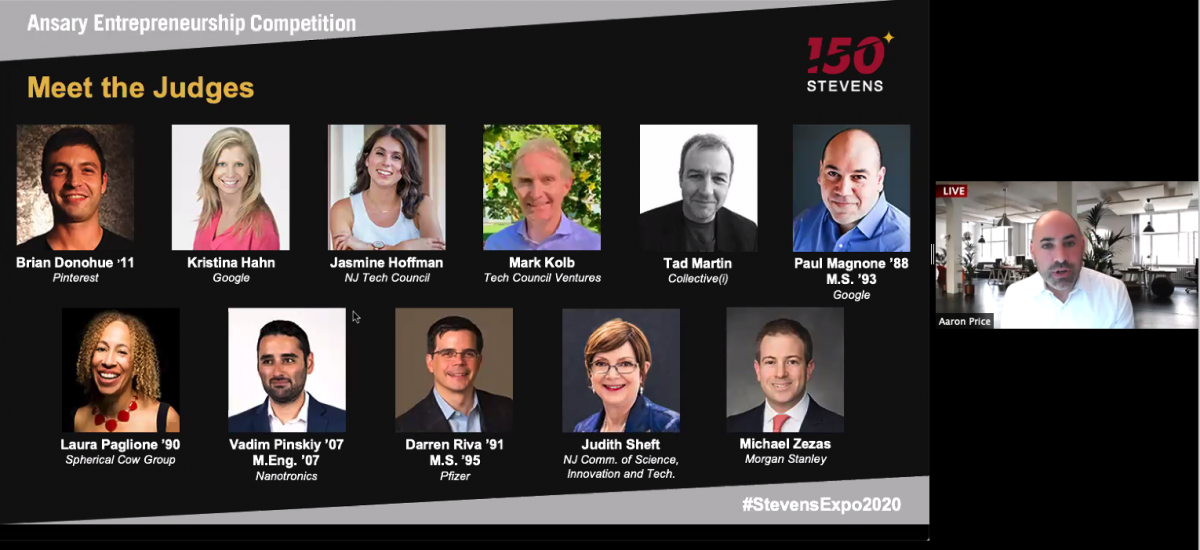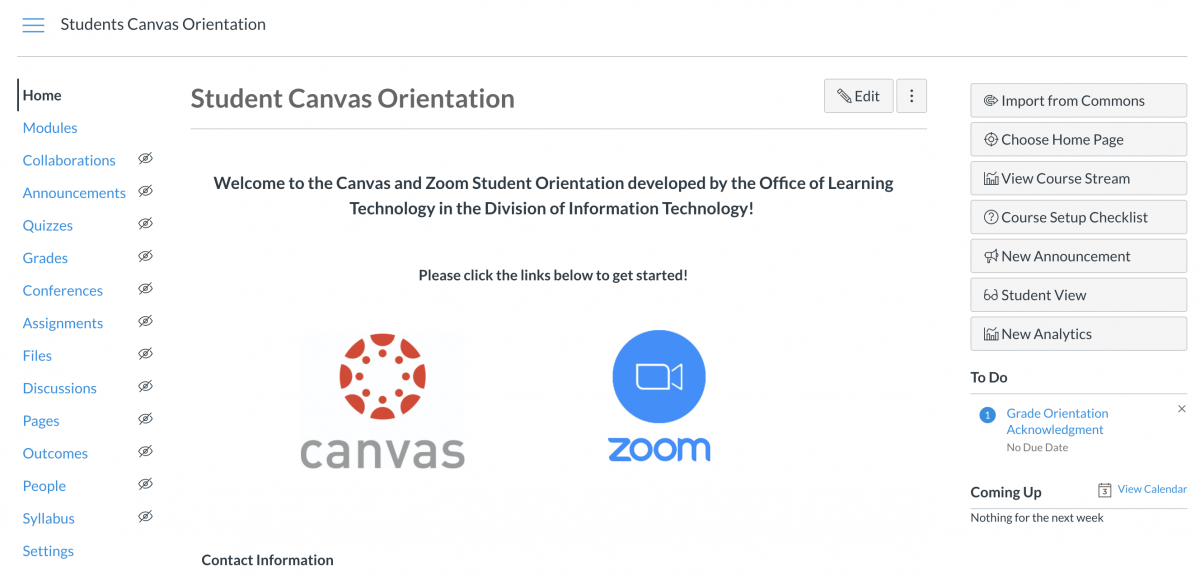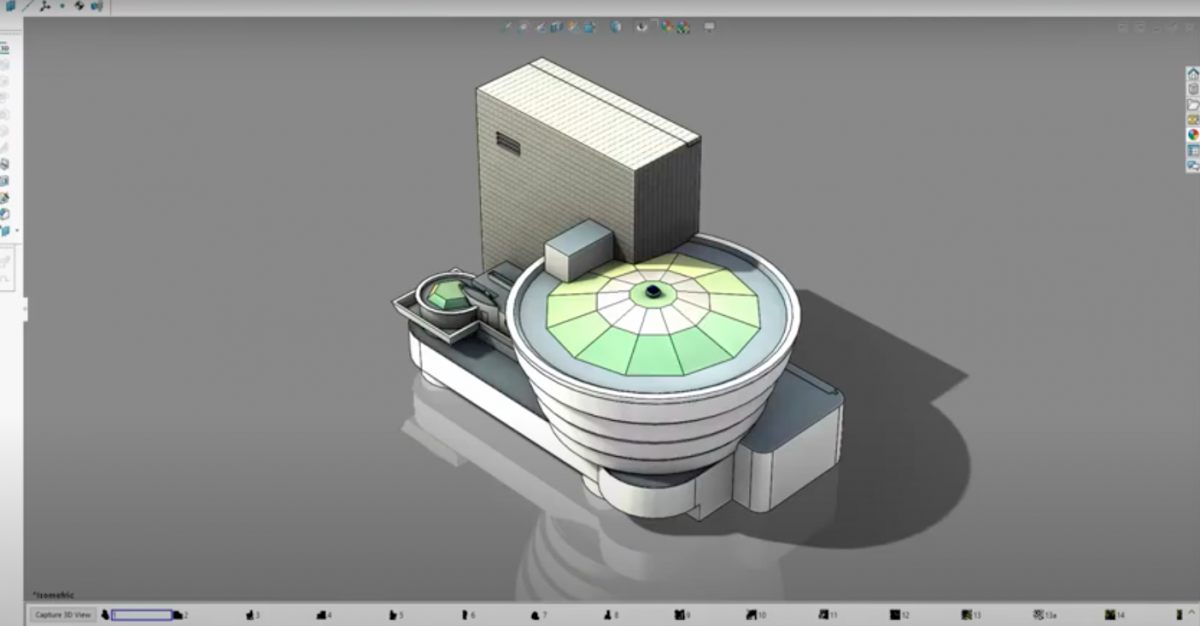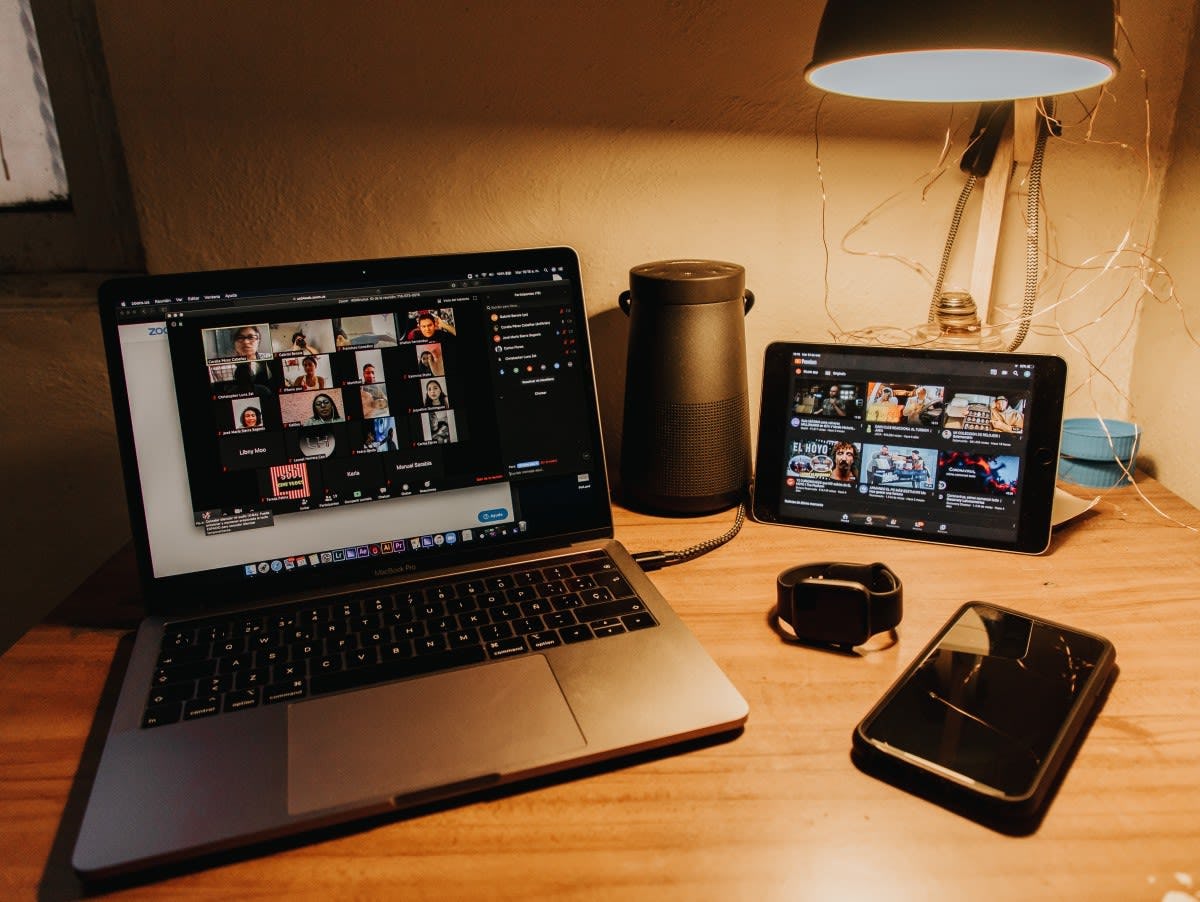How A University Pivoted to Virtual Instruction and Learning As the COVID-19 Crisis Escalated
Stevens Institute of Technology's experience leveraging technology solutions enabled rapid response and transition to virtual instruction, operations and student support
When Stevens leadership announced, in mid-March 2020, that the university's campus would be required by state executive order to close temporarily due to the escalating COVID-19 health crisis, life changed in an instant.
Yet Stevens operations, instruction and even student support mostly continued apace.
"Technology is ingrained in Stevens' culture, so it's no surprise that we were able to make the switch to online learning so quickly," said Provost and Vice President for Academic Affairs Christophe Pierre later.
"I'm extremely proud of the way our faculty and students handled the transition. It shows how committed our students are to learning and how dedicated our faculty are to teaching."
In mid-April, Stevens moved its annual Admitted Student Day to a virtual platform for nearly 800 incoming first-year students. Two weeks later, the highly anticipated Innovation Expo successfully took place via live video, enabling senior teams to showcase an impressive array of year-long design projects to hundreds of fellow students, faculty, parents and others in spite of the pandemic.
A pair of virtual COVID Hackathons were instantly created, bringing new ideas and entrepreneurial energy to the growing crisis.
Meanwhile, Stevens' Career Center continued delivering support to students coping with abrupt changes in their job searches, career plans, internships and co-op programs.
Faculty and administration also helped ease the transition for students in other ways, as well.
Eden Luvishis, a quantitative finance major in the class of 2023 who traveled home to the San Francisco area, pivoted from a planned summer abroad session in Spain to a remote research project working with Stevens' Hanlon Financial Systems Lab, where she designed and tested financial system-simulation algorithms.
"Our professors have been extra-accommodating in terms of offering remote research positions," she said.
Sarah Wiessler, a software engineering major, ended up stranded in Peru for a time by mandatory quarantines during Stevens' spring break — but she still continued taking classes virtually.
"All my professors were incredibly understanding and provided me ample time to complete my work both abroad and then once I returned home," she said. "If the online class response hadn’t been immediate, I would have fallen far behind."
Virtual learning experience, agility proved key
As the university's courses instruction moved online, faculty and students reported few hiccups. That was no accident: Stevens' forward-looking IT leadership had already tested and implemented virtual platforms for instruction several years ago, moving some services to a cloud-based environment.
"Making this transition with little to no warning has been extremely challenging for all our faculty and students, and we are providing as much training and preparation as possible," said Mike Parente, Stevens' interim vice president for information technology.
"Feedback, so far has been very positive."
The university was already delivering dozens of software packages to students and faculty on demand from the cloud via a virtual learning environment, while the university's learning management system, Canvas, was also already in use by faculty.
"Every course at Stevens automatically already had a Canvas space being created for it," explained Michael Scalero, Stevens' director of learning technology. "This was by design. We had also brought the Zoom video chat software platform to Stevens as one of our core instructional services back in 2018."
"This was all critical to the transition."
Chemistry and chemical biology professor Anju Sharma, for instance, moved an entire section of 27 first-year students taking an introductory chemistry course online and felt the technological pivot performed well.
"Although the first few classes were mostly just us talking to our screens, we utilized the 'Zoom room' feature much more effectively after returning from spring break," she recounted.
Adrian Castellanos, a civil engineering major, appreciated faculty going the extra mile to offer extended virtual office hours.
"Professors have been taking the time, when they do have the time, before or after class to meet individually with students," he said. "I feel like that really helps. It's a very good practice and I hope it continues."
"It has certainly been challenging," noted mechanical engineering professor and robotics lab director Brendan Englot, who extended his office hours and made other accommodations to assist students as the pandemic grew. "But I think we've found a way to make it work well."
Every faculty video lecture is also recorded and posted in the Canvas learning module by Stevens' faculty for later viewing or replay.
"That's very beneficial," adds Castellanos.
Virtual platforms, simulations lend an assist
Laboratory and design coursework, as well as student and faculty research, also moved online.
Matt Libera, a materials science professor who oversees an upper-level Design V ("D5") course required of all undergraduate engineering students, managed the transition by leveraging a virtual-laboratory software package that enabled simulations with a range of materials, systems and processes.
Libera began tasking D5 students with projects such as virtual sustainability analyses of the energy consumption and carbon dioxide emissions associated with various materials' manufacturing, transportation, use and disposal.
"One problem we worked on remotely, for instance, was comparing the energy consumption and CO2 output required to package and transport San Pellegrino water — packaged in Italy in either a glass bottle, an aluminum can or a plastic bottle — that is eventually consumed in Hoboken, New Jersey," he explains.
"They could actually do that analysis from home, using the analysis package, gaining considerable insights."
Libera also shifted his course assessments on the fly, moving from group lab reports to individually produced video reports. Final sustainability presentations for the semester were made via Zoom, as well, produced by student teams.
"I felt that for a lab everything was transitioned very smoothly," said Brittany Seelman, a chemical engineering major who participated in the D5 course. "I already knew how to use the software from earlier labs we had done in class. There were some aspects I hadn't used before, but Professor Libera and his TAs went over how all the different programs we'd be using worked during Zoom calls."
"I also really appreciated that all our instructions were transitioned into a completely online format, which was easy to follow and understand even if you couldn't attend the Zoom lecture times."
Industry professor Clarke Snell, who teaches another required design course (“D2”) to first-year students, noticed the same trend.
“I think students were actually more willing to ask questions in breakout rooms than in person, and I did a lot more private Zoom meetings than I ever have done during private office hours,” said Snell. “In the end, we ended up getting good work done.”
The D2 section's class project involved designing a simple sensor-network infrastructure that collects environmental data such as temperature, humidity and light levels, then publishes and analyzes that data.
“Since we did not have access to our 3D printers,” said Snell, “that freed up time in the workflow. I was impressed how some teams took advantage of that to make much more elaborate enclosures.”
One team of three D2 students, for instance, designed a working enclosure styled after New York’s Guggenheim Museum from scratch, using software tools — without access to any of the structure’s blueprints.
“Not only is it formally accurate, but it’s also functional,” points out Snell. “The drawers, the sensors, the battery compartment and the wiring harnesses are all elegantly designed. It's not just a cool looking model but a very good early version toward a conceptually marketable product.”
Business professor Peter Koen, who developed and co-teaches a required first-year introduction to entrepreneurial thinking course with required professional video presentations, pivoted as well.
“The class began with students choosing a problem that they felt would be worthwhile to solve, something that really bothered them,” Koen explained. "However, in mid-February they were given a choice to pivot to a COVID-19 project.”
Lab research was curtailed by the crisis, but not entirely paused.
A few student and faculty researchers returned to their labs on campus, practicing safe social distancing and health measures, if their work was deemed "essential" per New Jersey state guidelines.
Postdoctoral researcher Alcendino Jardim-Neto was one of them. Jardim-Neto continued developing and testing a low-cost ventilator design on campus in faculty member Carrie Perlman's lab, a project with obvious immediate applications to the health crisis.
Other students and faculty continued research via secure links to campus tools and databases.
"Most of my doctoral students were still remotely accessing high-performance Linux desktops housed in my lab in the ABS Building via a secure application," said robotics lab director Englot, who also continued his own research from home. "Much of our research can continue to make progress, using simulation tools and previously gathered data, for the time being."
Student design teams, adapting on the fly
Senior design teams, caught partway through completing their required capstone senior year projects by the crisis, also scrambled to retool projects as the final weeks of their college careers ticked down.
And the teams proved quick studies, coping adeptly with the new challenge:
A team designing a novel, two-part patient transfer device for medical professionals in partnership with Hackensack University Medical Center also pivoted, building out fuller business projections rather than completing a physical prototype in time for the Expo. The approach paid off: the team won the Expo's Ansary Pitch Competition, taking home a $10,000 first prize. Advised by professor Vikki Hazelwood, the team has since filed patent disclosures and retains interest in creating a startup.
"We had the prototype probably 60% built, so we were able to do one good test of the forces the device could handle before campus shut down," explained Astik Risal '20, a biomedical engineering major and LiftAssist team member. "Then we moved to doing business analyses, meeting up with each other and our advisors in video chats.
"We also applied knowledge from our senior-year courses, where we learned a great deal about modeling business conditions. That material translated directly to the pitch competition. When the judges asked questions about price point, demand, scaling or sustainability of the business, we were prepared."Another senior design team developing a smart-watch application to monitor anxiety and panic moved online as well, sharing codebases on the popular GitHub platform and working out issues via the popular group-chat platform Discord. That team won a departmental award for their demonstration app, BitBuddy, which is currently in consideration by Apple's iOS application App Store.
“With software projects, fortunately, it’s pretty easy to take them online,” explained Besnik Balaj, a computer engineering major on the team. "The ability to share screens with each other in real time made a huge difference."
Another design team working to design a novel drone that can scan objects from the sky, storing detailed data for later use in 3D printing miniature replicas, was suddenly forced to cancel its entire hardware testing phase by the accelerating crisis. Advised by professor Hamid Jafarnejad Sani, they turned instead to new aircraft simulation software developed by Microsoft and Stanford University, presenting detailed, high-fidelity possibilities for the technology.
And a team working on a multi-drone surveillance security system assembled its project piecemeal, working independently in remote locations while also updating code on GitHub.
"We actually had team members testing drones in their backyards," noted Englot, who co-advised the team with fellow mechanical engineering professor Eric Williams. "They ended up getting a lot farther with the functionality of their system, particularly its networking and communications capabilities."
Continued enhancement, new tech tools on the horizon
As the COVID-19 pandemic continues, Stevens leadership is watching government and public health officials for guidance.
"Stevens will implement a phased and flexible approach to re-opening the campus," explained President Nariman Farvardin in early May.
Meanwhile, as the university's summer session approaches, instruction and operations will continue virtually. Faculty have begun re-entering laboratories and creating videos to highlight key aspects of specific experiments that may not be able to be conducted in labs during the summer.
QF major Luvishis will conduct research with business professor Ionut Florescu over the summer, receiving a Stevens scholarship stipend during that time — one of approximately 180 Pinnacle Scholars who will conduct summer research with financial support.
The School of Engineering & Science created a weekly Virtual Research Forum to share new work both internally and externally, and assist in faculty discussions and collaboration. Stevens' respected I&E Summer Scholars research program will continue, operating remotely. Selected undergraduate researchers will complete projects at home and submit them online, using a prescribed set of software platforms and tools.
And the university's Pre-College Programs for rising high school juniors and seniors will also move online this summer, offering live programming.
In preparation for the 2020 fall semester, Stevens' IT division continues exploring additional technology packages to enhance virtual learning, such as interactive video — whereby students make choices within teaching scenarios, directing the flow of instruction — as well as specific VR and augmented-reality packages that create highly realistic simulations for biology, chemistry, mathematics and other instruction.
"There are specific platforms that can enhance the experience," explained learning technology director Scalero.
The university will also test and deploy added layers of cybersecurity this fall, including enhanced tools that analyze system activity and network traffic to detect potential attacks in real time, building upon recent security upgrades.
And additional analytics will be offered to faculty during the coming academic year — an effort to help instructors uncover more useful insights into students' virtual learning.
"We need to be as flexible, adaptable and forward-looking as possible," summed interim IT chief Parente. "We are working closely now with faculty and the academics units to ensure we are prepared for whatever the new normal becomes, in order to continue delivering the very best learning experience to our students; that is Stevens' core mission."
"And we will be prepared."






